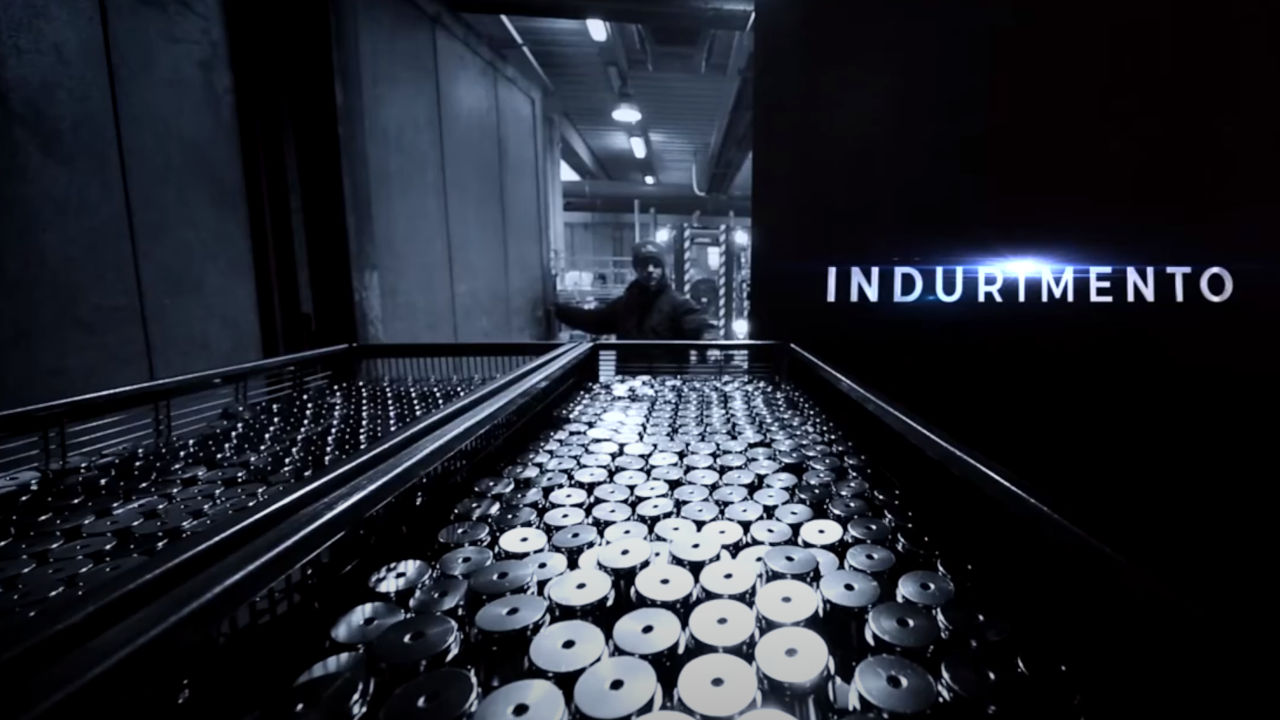Electroless nickel plating is a surface treatment that uniformly coats the part with an alloy of nickel and phosphorus. Changing the composition of the treatment bath produces types of electroless nickel with different percentages of phosphorus and consequently different characteristics.
Three types of electroless nickel coating can be distinguished:
- Low-phosphorus electroless nickel - P between 1 and 4%
- Medium-phosphorous electroless nickel - P between 5 and 9% - NIPLATE® 600
- High-phosphorus electroless nickel - P > 10% - NIPLATE® 500
The higher the phosphorus content in the alloy, the greater the impeding effect on the formation of the crystalline structure of the alloy during deposition. This leads from a partially crystalline and partially amorphous structure for medium phosphorus electroless nickel to a completely amorphous one for high phosphorus electroless nickel.
The typical magnetic susceptibility of nickel metal decreases as phosphorus increases until it is close to zero for high phosphorus electroless nickel (over 10% P).
The increase in phosphorus in the alloy also corresponds to a slight reduction in the hardness of the layer from about 650 HV for medium phosphorus to about 550 HV for high phosphorus.
Two classes of heat treatment can be distinguished after electroless nickel plating:
- Hydrogen Embrittlement Relief: 150-180°C
- Hardening: 260-280°C or 340°C
Hydrogen Embrittlement Relief
Parts coated with electroless nickel are usually heat-treated at 150-180°C, called Hydrogen Embrittlement Relief heat treatment, which removes hydrogen that may have diffused into the metal matrix during treatment. Hydrogen, which can be incorporated during nickel plating and acid pickling prior to nickel plating, can diffuse into the steels and create the phenomenon called hydrogen embrittlement. This heat treatment allows the hydrogen present in the base material or at the interface with the coating to evolve in air.
The newly deposited electroless nickel layer possesses internal tensions that can be compressive or tensile, which can limit adhesion, especially on hard or heat-treated steels. Heating the coated parts decrease the internal tensions between the coating and the base metal, which also increases adhesion.
Depending on the type of alloy on which the electroless nickel is deposited, a temperature close to 160°C is used in the case of aluminium alloys, for between 2 and 4 hours, while for iron or copper alloys the temperature may be higher, around 180°C, again for 2-4 hours of heat treatment.
Hardening heat treatments
The typical hardening heat treatments of electroless nickel plating are 2 and occur at different temperatures:
- 260-280°C for 8 hours: allows hardness to be increased to about 800 HV.
- 340°C for 4 hours: allows hardness to reach 1000 HV.
Since the amorphous Ni-P phase is an unstable phase, when electroless nickel is annealed at temperatures above 260°C, the first activation peak of crystallization energy occurs, sufficient to create a displacement of the phosphorus atoms dispersed in the nickel matrix. The two elements reorganize, passing through intermediate metastable crystalline phases Ni7P3, Ni5P2, up to the stable crystalline phase Ni3P, which occurs from 280-290°C.
To reach the maximum hardness of approximately 1000 HV, a heat treatment at 340°C for at least 4 hours is carried out. The final coating structure is a fine network of Ni3P hard nickel phosphide crystals dispersed in the remaining nickel metal matrix.
The hardness of 1000±50 HV, which can be obtained with the hardening treatment, allows electroless nickel plating to be used as an alternative to chrome plating, taking advantage of the fact that the deposit is uniform on all surfaces, even in the internal parts, and does not have to be reworked as is the case with chrome plating.
With electroless nickel hardening heat treatments, the adhesion of the coating to the base metal is also greatly improved. Even, in order to ensure adequate adhesion on nitrided or carbonitrided steels or stainless steels, heat treatment at temperatures above 260°C after nickel plating becomes necessary.
Surface coloring
Around a temperature of 270°C, electroless nickel tends to react with oxygen, creating yellow-gold haloes. The higher the temperature, the more the surface of electroless nickel can acquire blue-iridescent tints, due to light interference with the nanometric layers of nickel oxide that are formed, as happens when stainless steel is burnt with a flame.
By treating electroless nickel in controlled atmosphere ovens, surface oxidation is avoided and maximum hardness can be achieved while maintaining the metallic silver color of nickel.
Magnetism
Electroless nickel is ferromagnetic when the phosphorus content is less than 10%. However, it must be remembered that with heat treatments above 250°C, the magnetic susceptibility of high phosphorus is restored due to the transformation from an amorphous to a crystalline structure. If the absence of magnetism is required, the high phosphorus electroless nickel plating Niplate 500 must be chosen and only the Hydrogen Embrittlement Relief treatment is possible.
Wear resistance
A higher hardness corresponds to a higher wear resistance according to an incremental curve. The ability to withstand abrasive wear is measured with the “Taber Abraser Tester” where a coated specimen is rotated against two rubber wheels containing abrasive of a defined grit. After every 1,000 cycles of rotation, the weight loss of the coating is tested and after 10,000 cycles, a wear index defined as Taber Index is obtained. For the wear values of the various Niplate® coatings, please refer to the coating description sheets:
The resistance to abrasive wear can be increased by at least 10 times compared to hardened electroless nickel by using NIPLATE® 600 SiC, which contains silicon carbide particles. With this coating, the hardness achieved is around 1100 HV, but the great advantage of the NIPLATE® 600 SiC composite coating is its exceptional abrasion resistance, as the sliding counterpart encounters silicon carbide particles on the surface, which have a high hardness that is lower only than diamond.
